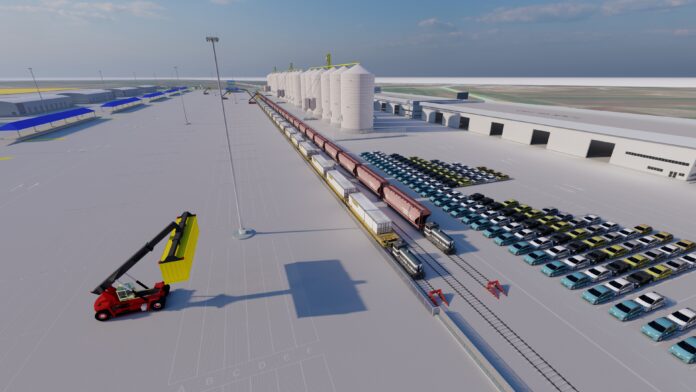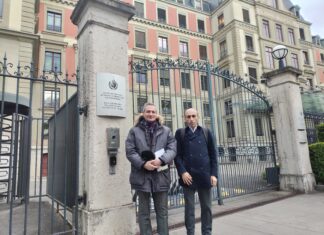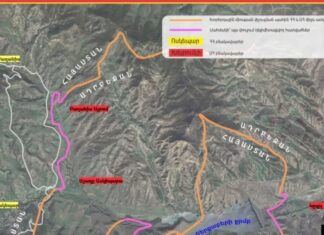GYUMRI, Armenia — Change is in the air for Gyumri, with a project for a “dry port” which could bring numerous international companies and the potential to double the city’s population in the next five years. However, what exactly is the oxymoronic-sounding “dry port” being planned in famously landlocked Armenia, and what makes Gyumri an ideal location for it?
The plan was first announced by the Ministry of Economy in 2021, and last year Minster Vahan Kerobyan said of it “we see an opportunity to return to Gyumri the status of an industrial city.” The concept was originally designed and proposed in 2011 by specialist in dry-port design, management, and operations Charle Malas, who is based in the United Kingdom and an Iraq-born half-Armenian. Such a specific project has never been attempted in Armenia, and the closest such dry port facility is as far away as Tehran, so Malas was called upon to lead the project, which will require substantial international expertise.
A dry port is an inland terminal with surface transportation connecting it to a seaport which serves as a logistics center for getting cargo to inland destinations. The process of sorting and processing containers at seaports is time-consuming, and they can become overburdened, as you might recall the scenes of hundreds of container ships sitting outside major ports such as Los Angeles during COVID. The concept of dry ports was created about thirty years ago to take off some of this pressure through inland terminals where the cargo can be processed instead. As Malas described: “Dry ports are operated the same way as a regular one; they utilize the exact same documentation and infrastructure, just the cargo comes off trucks and rail wagons instead of ships.”
Gyumri is in a special position to do this, as the 630-hectare site borders the Gyumri International Airport, Armenia’s north-south highway, and a railway mainline, creating an ideal transportation cluster. “This uniquely colocates three forms of transport at the site which makes it very attractive to the international market’s transportation companies,” explained Malas. Besides being close to the Georgian border and the Black Sea beyond, Gyumri is also extremely close to the Turkish border, about which there’s been much talk of a possible opening to cargo. Yet much depends on the outcome of the upcoming presidential election in Turkey. There are many issues surrounding how the Armenian market would fare with such an opening, but there’s no doubt an open border would make the dry port’s position even more prime.
The design for Gyumri’s dry port is focused on exports, where the goods will clear customs in Armenia instead of at the seaports in Georgia. Yet Malas notes a dry port alone is too big for Armenia’s needs. For this reason the complex will also host an industrial park that will generate trade to make it more effective and attractive to international companies from fields such as pharmaceuticals and high tech, amongst many others. According to Minister Kerobyan: “the industrial park is created to provide industrial companies with necessary infrastructures. They also serve as logistic centers, terminals for containers, which are used to transfer cargo from one mode of transport to another with minimum costs.” The Gyumri airport will also have the added boost of being designated a tax-free special economic zone (SEZ). The transportation cluster around Gyumri will give manufacturers the ability to reduce their shipping and operating costs while producing goods which will further the facility’s export-centric nature. Malas noted the industrial park has a critical role for diasporan-owned companies to play: “they will be invited to ‘copy and paste’ their factories into the industrial park, which is also being eyed by a number of other international businesses to potentially produce goods there. Diasporan companies would be in good company, alongside interest already coming from China, Europe, the Middle East, Russia, Georgia, and Iran.”
The Armenian government envisions a public-private partnership to operate such a facility and will require many highly-experienced professionals from abroad, as that specific expertise doesn’t exist in Armenia. Malas detailed how “the great deal of interest the project has already attracted creates confidence needed for potential international backers to join. Government involvement is also needed, and while there is improvement needed in some regards such as tax issues and ease of setting up companies, collaboration with the Ministry of Economy is ongoing and amendments can be made to existing rules. Feasibility studies in the coming months will be considering these issues and indicate future steps, but we are already in early discussions with experienced blue-chip international port operators.”









